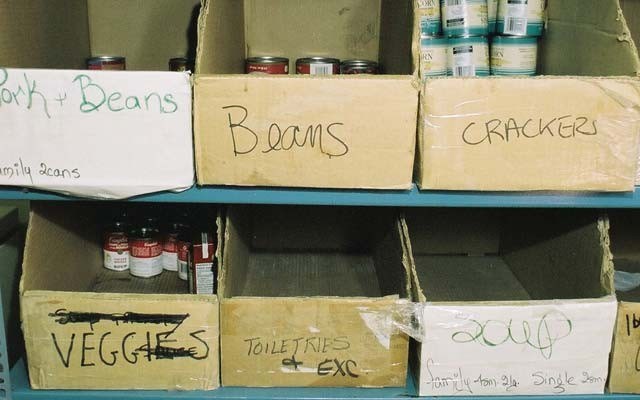Within a few days last week we learned from the newly updated Economic Partnership Initiative report that Whistler brings in an enormous amount of money. The 2016 report cited a breathtaking $1.2 billion in consumer spending by 2.7 million annual visitors. The tax revenue generated per day is $1.37 million. Whistler's Gross Domestic Product is $1.53 billion per year, which represents an annual growth of 5.6 per cent since the 2012 report.
Contrasting those figures is a report from the Whistler Community Services Society (WCSS) that food-bank use has increased by nine per cent.
More than 2,000 Whistler people used the food bank in 2015 — out of a population of roughly 10,000 permanent residents. And of those, about 25 per cent have lived in Whistler for 10 years or longer. And more than 600 of those were children. There is something dreadfully wrong with this picture.
Cheryl Skribe, WCSS executive director, said in the annual report dated June 29 that the top reason for food-bank use is because of injury. But food banks are also used by full-time workers who have financial difficulty due, in part, to the high cost of living in Whistler.
A 2011 Canadian Centre for Policy Alternatives study found that the calculated living income for a Vancouver family was $18.83 per hour. A living income is calculated by adding income from employment to income from transfer programs such as the Child Care Tax Benefit, the Universal Child Care Benefit and GST rebates. The deductions such as Employment Insurance premiums, federal taxes and provincial taxes are deducted.
Dan Wilson, a sustainability planner with the Whistler Centre for Sustainability, said that figure would be about $21 an hour in 2016 for Whistler assuming there are two working parents who each earn that much. This study couple would have two children: a 13-year-old and a nine-year-old.
A 2015 study by the Provincial Health Services Authority showed an increase of $60 a month for a family of four in the Vancouver Coastal Health region to buy food. The total amount required for a family to eat properly is $997 per month, and for a single male between 19 and 30 years old it is $302. For an older male between 31 and 50 years old, it is $273. Wilson said an adjustment of another 10 per cent would have to be added to accommodate Whistler's higher cost of living.
A glance at Pique classifieds reveals numerous jobs where you can earn $11 an hour. After taxes, that's just over $1,500 per month. Deduct the rent — and let's be conservative and assume this person rents a room for $600 a month — then deduct the projected food costs of $300 (adding 10 per cent for Whistler prices) — and that leaves about $600 for gas and vehicle maintenance and insurance, cell phone, clothing, and — likely applicable in this example — shared heating costs, plus cable and WiFi. It would be prudent to include the cost of visits to the dentist and saving for RSPs. And a season's ski pass. No wonder food-bank use has increased.
For anyone in need, the food bank becomes a necessity. But as Graham Riches — former director of the Department of Social Work at the University of British Columbia and a professor emeritus who has researched food-bank use for more than 30 years — told Pique reporter Braden Dupuis last week, there needs to be change.
"We have to change the conversation from food charity to the right to food, and the right to food is about government at all levels...being the 'primary duty bearers' in terms of their responsibility for the collective social well-being of their populations," Riches said.
He is right, of course. Several levels of government must step up.
Whistler has excelled and the rewards are constant: As the No. 1 ski-resort destination in so many categories and for so many years it is difficult to remember a time when it wasn't. And still the visitors come. And still the staff in this pretty little resort is paid $11 an hour with no benefits and — mostly — no help for subsidized housing other than a years-long waitlist.
What is the tipping point? Have we already reached it? Whistler can bask in the glow from such outstanding growth numbers. Yes, well done. But what will this look like if the Renaissance project moves ahead and hundreds more workers arrive to build, develop and staff the newest attractions? Where will they live and how much will they be paid? How will they afford to be able to eat?
We had best stock the food bank.




